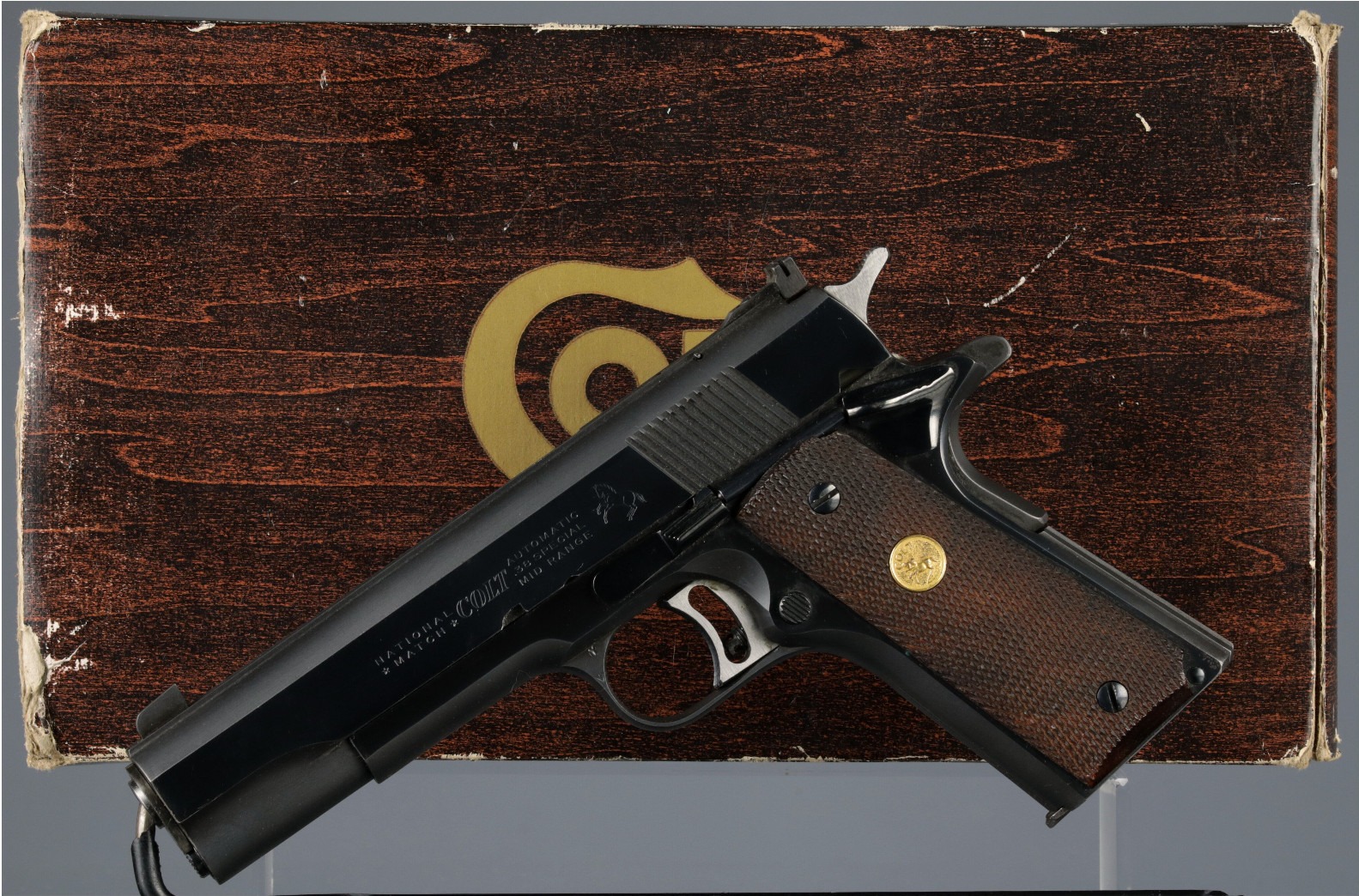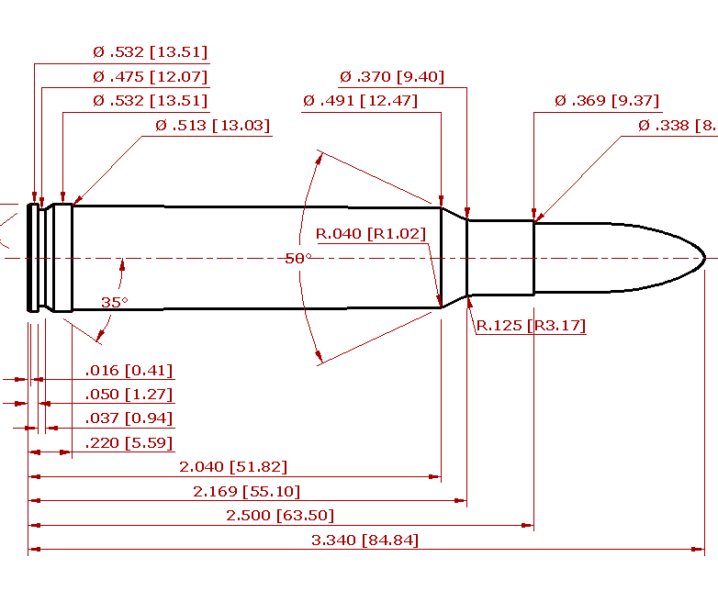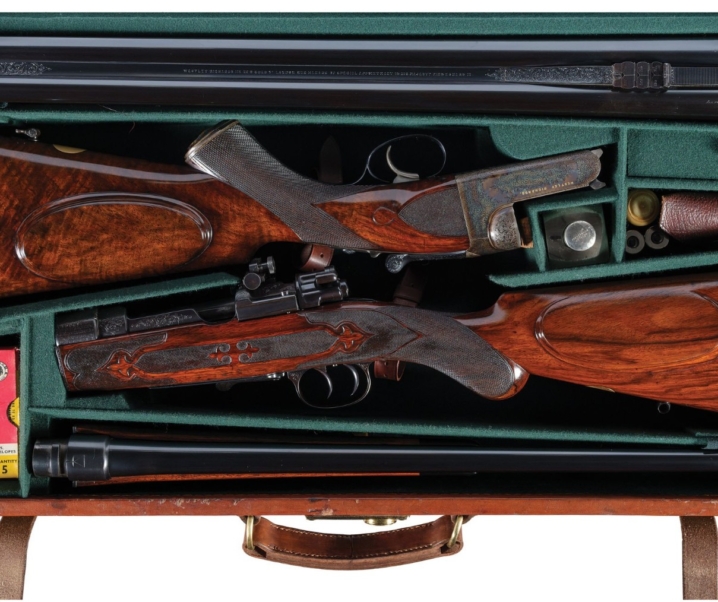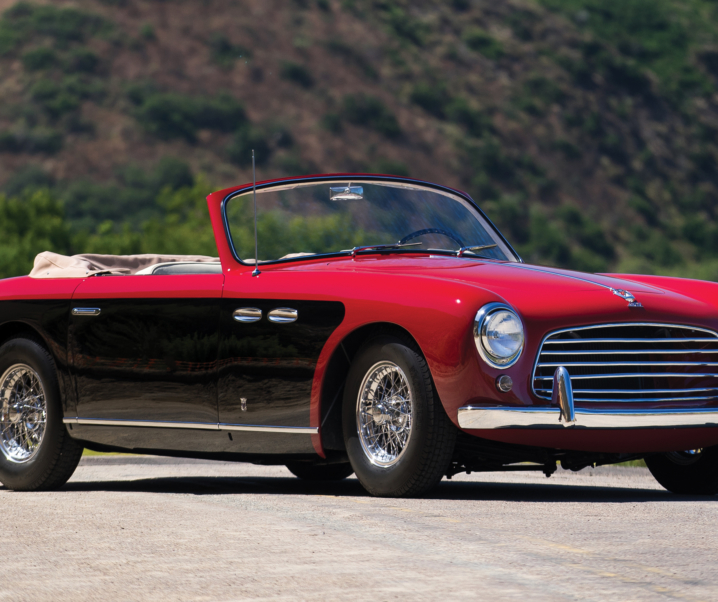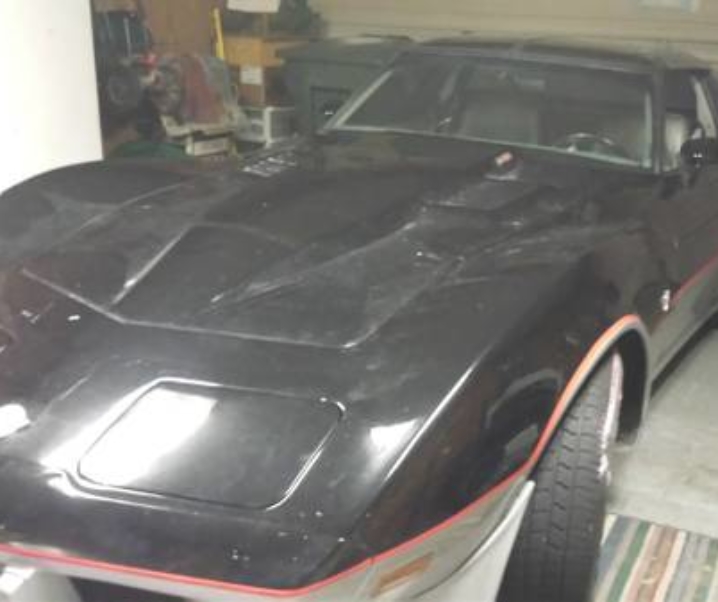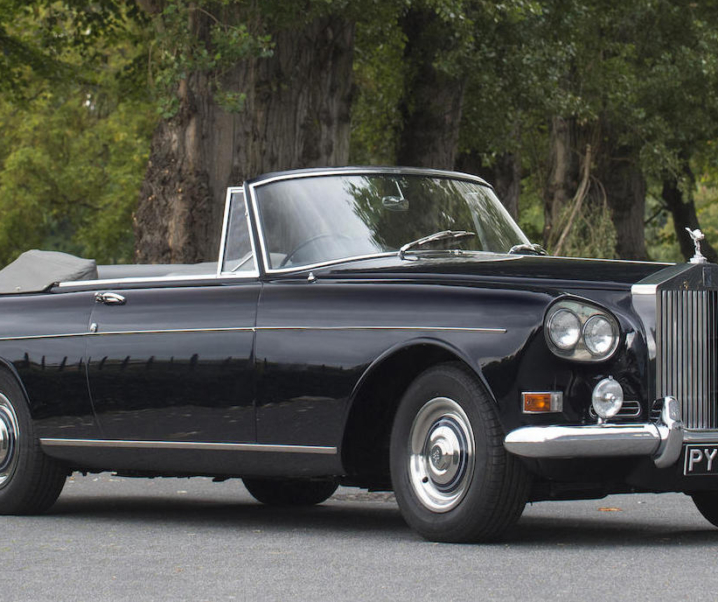Made specifically for ISSF Centerfire Match target shooting the Colt National Match .38 Special Mid Range semi-automatic pistol is a quite rare model among M1911 pistols. It features a blowback operation and was designed specifically to use .38 Special Mid Range wadcutter target ammunition.
Fast Facts
- The Colt National Match .38 Special Mid Range semi-automatic target pistol was designed specifically with the ISSF Centrefire in mind.
- The pistol was created not only for the North American market, but also for countries and jurisdictions where legislation imposed restrictions on the specification of pistols that civilians were permitted to own and use.
- This Colt National Match was an attempt to provide a competitive handgun that would produce better accuracy than the revolvers which in the 1960’s were the most common handguns in use for this match.
- The Colt National Match .38 Special Mid Range was introduced in 1960 but the early design had some deficiencies and there was a Mk.II and then a Mk.III improved version.
- The Mk.III was the version that perfected the design.
The Colt National Match .38 Special Mid Range model was designed specifically with the International Shooting Sports Federation Centrefire match in mind.
While folks in the United States can generally enjoy the original Colt M1911 pistol in .45ACP things have been quite different in other countries, where shooter’s may be limited to pistols up to .38″. For example in the Australian State of New South Wales pistols above .38″ calibre are deemed to be “High Calibre” and are subject to additional restrictions.

Depending on the country and legal jurisdiction the types of pistol a civilian might be allowed to own can be quite restrictive, both in terms of the calibre and type of ammunition allowed, and the magazine capacity.
When I took up pistol shooting back in the 1970’s I was living in an Australian outback mining town. The main target shooting matches we were allowed to participate in were the Olympic matches: 50 metre Free Pistol match shot on the standard 50 metre ISSF pistol target, and the 25 metre Rapid Fire event, which back then was shot on silhouette targets.
Additional to those were the Standard Pistol match, shot at 25 metres on the ISSF 50 metre target, and the Centrefire Match which comprised two events; a slow fire Precision event shot at 25 metres on the ISSF 50 metre target, and a “duelling” event shot at 25 metres on the Olympic silhouette target. These targets were on a turning system and the target would face the shooter for three seconds and then turn away for seven.
There was also a Ladies Match which followed the same format as the Centrefire Match but was shot with .22lr pistols. If I remember correctly the shooting section of the Olympic Modern Pentathlon followed the same format and was also shot with .22lr pistols.
The ISSF Centrefire Match was designed so that revolvers could be used and so each application in the Duelling section was limited to five rounds, repeated four times to make twenty shots in total for a score out of two hundred.
This was the specific match that the Colt National Match .38 Special Mid Range model was designed for.
The rationale behind the creation of this model was that it would be more accurate than the revolvers most competitors were using in the 1960’s and 1970’s, the most popular of which was the Smith & Wesson K-38 with target sights. But it was also created so that it would be legal in a wide range of international jurisdictions: and seen in that light the pistol makes a lot of sense.
In order to make this pistol as accurate as possible Colt decided to eliminate the Browning recoil operation of the action which used a toggle link that allowed the slide to move a short distance and which would then angle the rear of the barrel downwards to unlock the locking lugs in the top of the barrel hood from the recesses in the slide. This then allowed the slide to open fully ejecting the fired cartridge case as it did so. The angling of the rear of the barrel downwards also served to better align the chamber and magazine to ensure reliable feeding of a fresh cartridge from the magazine.
Colt’s engineers did not want to have the barrel alignment change, realizing that this introduced a variation in how the barrel would align each time the action closed. So this National Match pistol was converted to straight blowback operation, thus keeping the barrel in consistent alignment with the sights and target. So in this case the barrel hood has no locking lugs but is smooth. However, the inside of the slide is standard M1911 and the recesses for locking lugs were present.
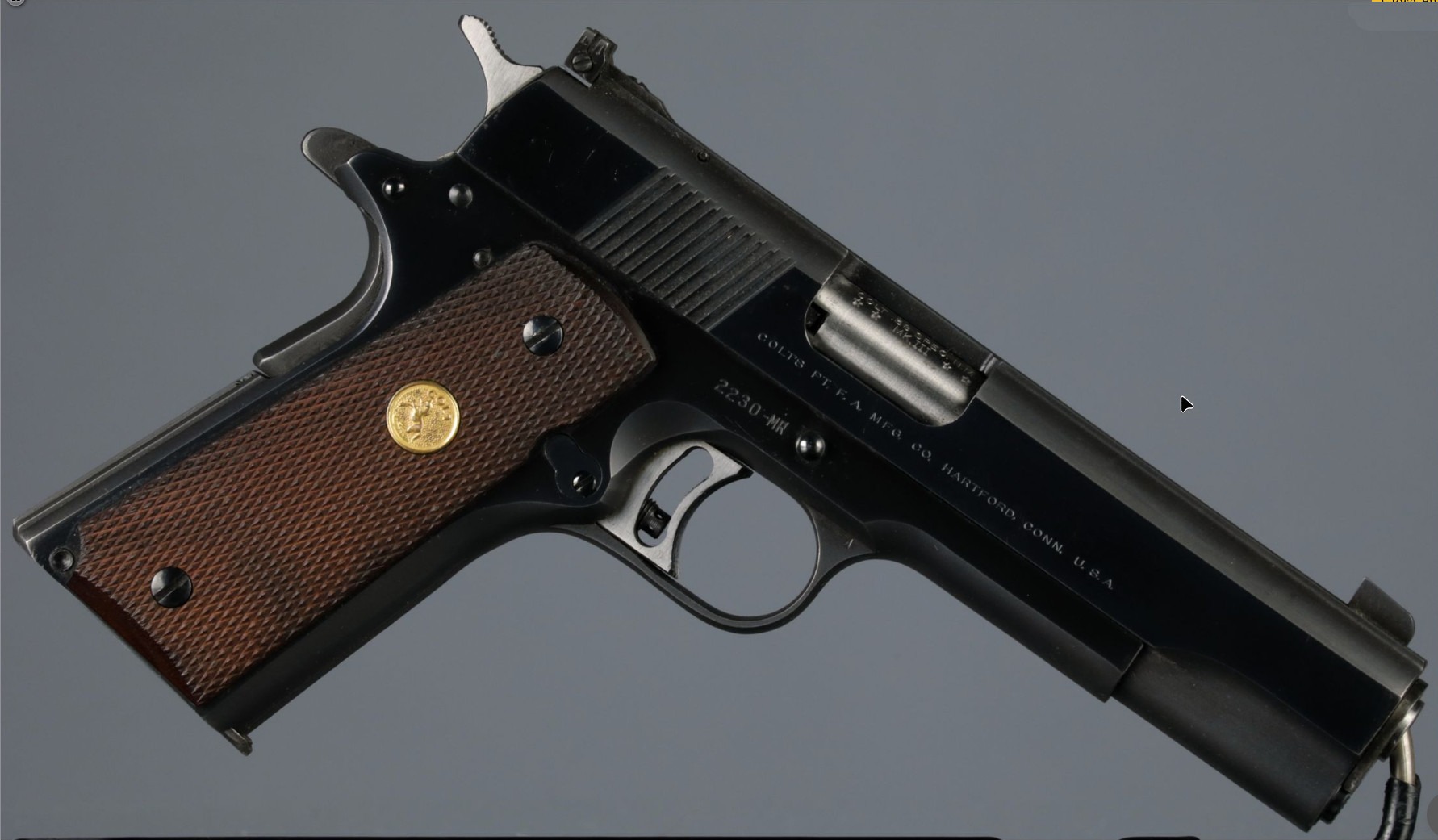
The engineers also paid close attention to the barrel bushing, to ensure a close tolerance and the best and most consistent alignment possible.
To achieve these things, and the reliable function of the pistol, Colt had some technological hurdles to overcome: and it took them three goes before they got the pistol working the way they wanted it to.
The first version of this pistol was produced in 1960 and it quickly emerged that it had some design deficiencies. There were a number of issues including that when the pistol was fired the slide was moving backwards towards battery while the bullet was still in the barrel, which caused erratic accuracy. The magazine also presented problems in that the flat nosed wadcutter cartridges would not always clear the front of the magazine body, making feeding unreliable.
Colt did some modifications to the pistol, providing for a decent headspace shoulder at the mouth of the chamber, and modification to the magazine to improve the cartridge’s passage out of the magazine into the chamber.
Colt also changed the barrel bushing from the conical shaped one of the early pistols to a flat one as found on the M1911 Government Model, and hand fitted for close tolerances.
These improvements were welcome, but still did not completely address the issue of the slide moving rearwards and beginning to open the action while a bullet was still traveling out of the barrel. It was clear that something else was needed to hold the cartridge case in the chamber until the bullet had exited the barrel.
Given that this was a pure blowback action the expedient way to retard the cartridge case extraction was to increase the friction between the case and the chamber so that while the chamber pressure was high the case would not budge. Colt chose to thread/groove the chamber to provide that increased friction and that worked well.
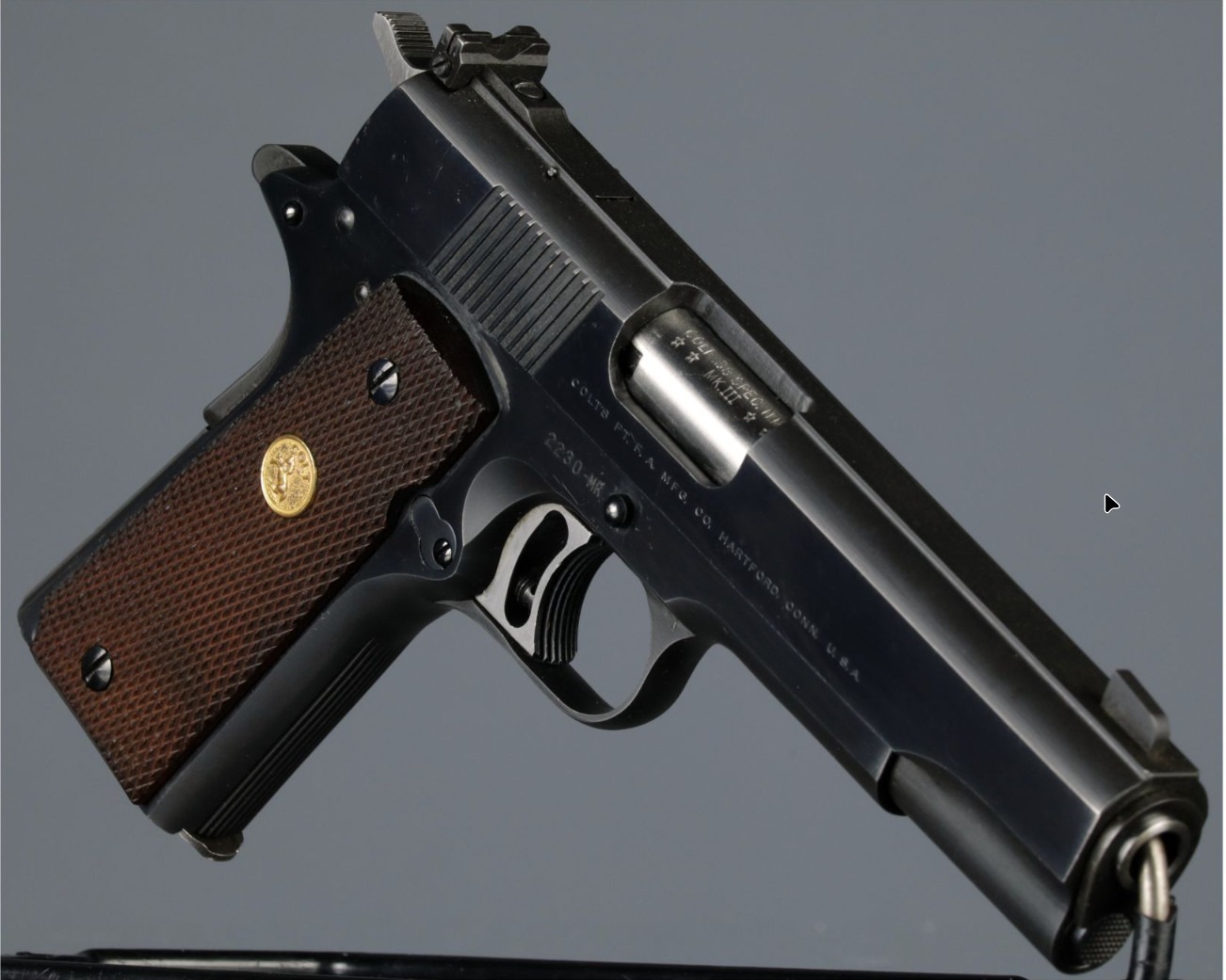
This improved version of the pistol was designated the Mk. III and the top of the barrel hood was marked:
COLT .38 SPEC. N.M.
* * MK. III * *
When production began in 1960 these .38 Special National Match Mid Range pistols were fitted with the Colt-Accro adjustable rear sight and a ⅛” Partridge front sight. From 1964 onwards the rear sight was upgraded to a Colt-Elliason.
In general these pistols were very like the 45ACP Colt National Match having the wide grooved adjustable target trigger, grooved front grip strap, grooved flat mainspring housing (with option to change to arched style), and rear slide grooves that were angled to match the angle of the grips.
The checkered wood grips featured the gold Colt prancing horse logo and the steel was finished in the beautiful Colt Royal Blue.
I owned one of these Mk.III pistols during the 1970’s and did a lot of shooting with it. My experience was that it was indeed very accurate and a delight to shoot. The singular downside was that it was quite fussy as to what ammunition it liked and what ammunition it refused to digest.
I think this was most likely caused because factory loaded ammunition for the .38 Mid Range wadcutters back in the 1960’s was primarily intended for use in revolvers, and revolvers are very adaptable as to the ammunition loadings they will happily work with. This combined with the fact that many target shooters wanted the lowest recoil seems to have tended some ammunition makers to load their .38 Special target loads on the light side.
For my own Colt .38 Special pistol I found that lighter loads caused regular “stovepipe” failures and the fix was to ensure that loads were adequately stout to ensure reliable cycling of the action. It turned out to be the factor that got me started in ammunition reloading.
Once I got through that little piece of troubleshooting the Colt .38 National Match turned out to be a fabulous pistol and I enjoyed it immensely: only reluctantly parting with it when I gave up pistol shooting just prior to traveling overseas during the 1970’s.
Colt were pioneers in creating their auto-loading ISSF match target pistol and in the wake of the Colt other manufacturers also began making their own auto-loading pistols for this target shooting discipline, most notably the Walther GSP which was made chambered for .32 Smith & Wesson Long wadcutter ammunition.
A Colt National Match .38 Special Mid Range Semi-Automatic Pistol is coming up for sale by Rock Island Auction at their April 17, 2024 sale.
You will find the sale page if you click here.
For those interested in a detailed analysis of the Colt National Match .38 Special Mid Range Semi-Automatic Pistol and its production variants there is an excellent resource available on the Colt Forum which you can find here.
The Colt National Match .38 Special Mid Range Semi-Automatic Pistol was beautifully made and finished, accurate, and a delight to shoot. It was in my experience one of the best pistols for ISSF style pistol shooting ever made.
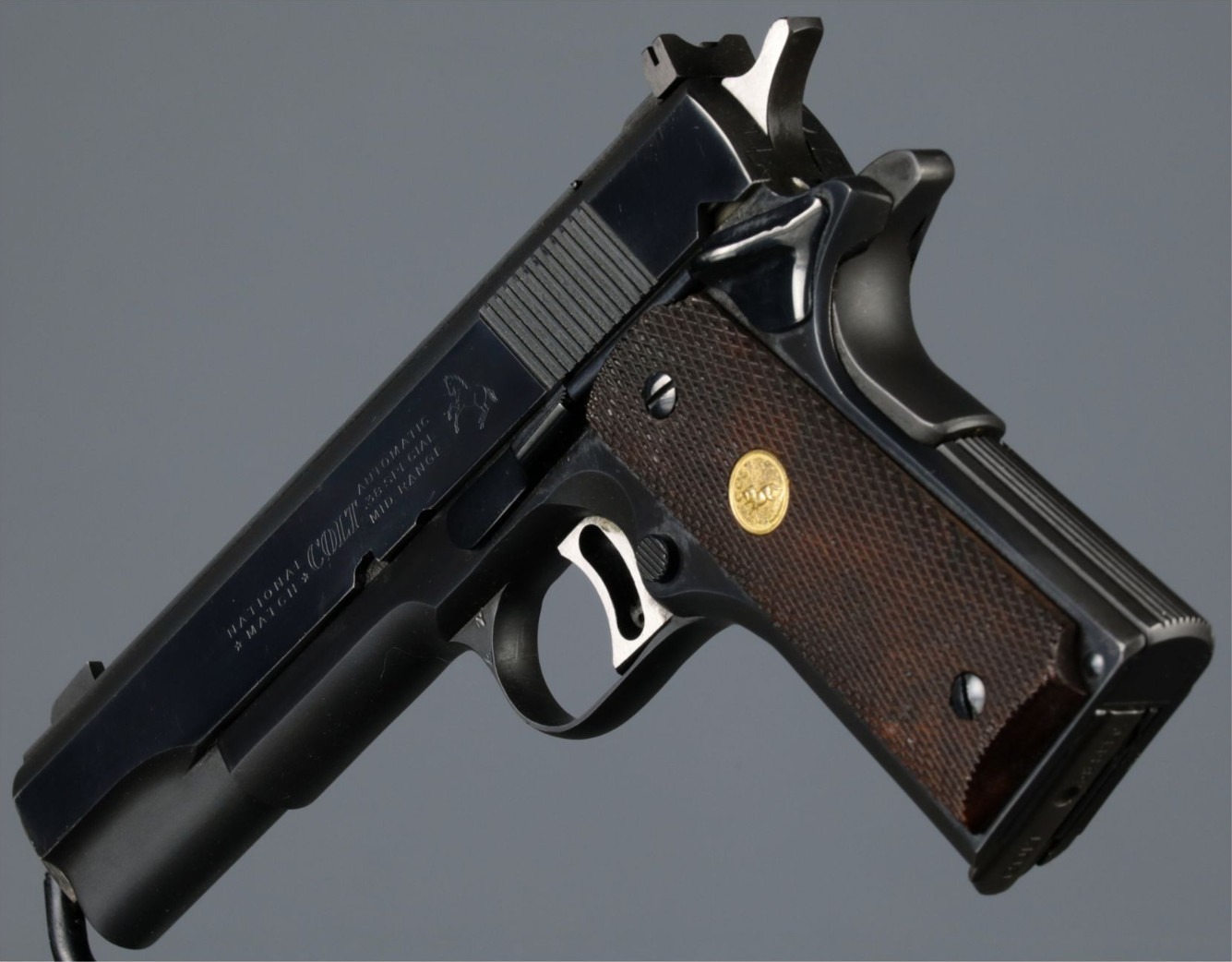
Picture Credits: All pictures courtesy Rock Island Auction.

Jon Branch is the founder and senior editor of Revivaler and has written a significant number of articles for various publications including official Buying Guides for eBay, classic car articles for Hagerty, magazine articles for both the Australian Shooters Journal and the Australian Shooter, and he’s a long time contributor to Silodrome.
Jon has done radio, television, magazine and newspaper interviews on various issues, and has traveled extensively, having lived in Britain, Australia, China and Hong Kong. His travels have taken him to Indonesia, Israel, Italy, Japan and a number of other countries. He has studied the Japanese sword arts and has a long history of involvement in the shooting sports, which has included authoring submissions to government on various firearms related issues and assisting in the design and establishment of shooting ranges.

